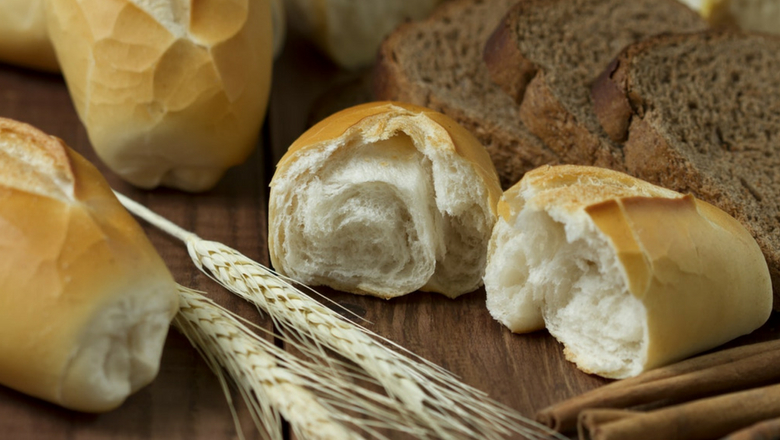I hope this email finds you well! As some of you may know, I recently started doing nutrition testing known as Nutrition Response Testing (NRT). It offers a way to see if people are sensitive to certain foods, chemicals, metals, etc. A common sensitivity that has shown up in people, myself included, is a sensitivity to gluten. Many of you may be familiar with this, or its more serious form, Celiac Disease. It is also something that appears to be on the rise…probably because if you’re eating the same foods you ate five and ten years ago, you are inevitably taking in more gluten. It all comes down to how our food is (over)processed and manufactured. For those of you asking the question, “What on earth is gluten?” here’s a little bit more information on a HUGE topic.
Gluten is a sticky, “glue”-like protein found in wheat, barley and rye. Though oats do not inherently contain gluten, they are also an issue because of cross-contamination during manufacturing. When people cannot digest gluten their bodies mount an autoimmune response, trying to fight it off, thus creating symptoms. With a very minor intolerance there’s a chance no symptoms will occur. But the reaction is cumulative, both in a day and over a lifetime. Common symptoms are gas, bloating and diarrhea. Gluten sensitivity also seems to underlie a lot of autoimmune and chronic disease processes. It can “masquerade” as more serious disorders, including but not limited to eczema, acne, severe chronic headaches, lupus, Irritable Bowel Syndrome (IBS) and osteoporosis. There are some blood and stool tests that can definitively diagnose Celiac Disease. Gluten sensitivities are harder to diagnose. One sure-fire way is to use the lists below and COMPLETELY eliminate gluten from your diet for at least two weeks (three-four is better) and see if any of your digestive symptoms change. As always, if you’d like any more information, or an evaluation, please email me. Keep in mind, when someone is sensitive to gluten, and it is completely eliminated from the diet, it really is life changing.
Gluten Free Guidelines
Forbidden Foods
- Barbeque sauce (check label for wheat or soy)
- Beer and ale
- Bread, including hamburger and hot dog rolls
- Bread- and cracker-crumbs
- Breaded products (such as breaded chicken or fish)
- Cakes and cookies
- Canned and boxed soups (wheat is used as a thickener in most soups)
- Canned luncheon meat
- Cereal (even corn and rice based cereals)
- Chocolate bars
- Chicken and beef broth (check to see if they contain wheat; some do not)
- Couscous
- Crackers
- Croutons
- Farina
- Flour
- Frozen vegetables with sauce packets
- Frozen Prepared Entrees
- Gravy(packaged and bottled)
- Ice Cream Cones
- Ice Cream(if contains gluten as a binder or added ingredients such as cookie dough
- Imitation bacon bits
- Imitation crab meat
- Macaroni , Spaghetti (all other types of wheat based pasta)
- Malt vinegar
- Meat Marinades (with soy sauce)
- Noodles and noodle products
- Pie Shells
- Pretzels
- Rice dinner mixes
- Salad dressings and meat marinades(if contains wheat or soy sauce)
- Sausage products(check label)
- Seitan (imitation meat made from wheat gluten)
- Soba noodles(unless 100% buckwheat)
- Soy sauce (unless it is specifically wheat free or gluten free)
- Stuffing mix
- Teriyaki sauce
- Vegetable side dishes that contain sauces or noodles
Unsafe Ingredients
- Amino Peptide complex(from Barley)
- Amp-isostearoyl hydrolyzed wheat germ
- Barley
- Barley extract
- Brewer’s yeast(unless prepared with sugar molasses base)
- Disodium wheatgermamido peg2 sulfosuccinate
- Filler flour(generally means wheat flour)
- Graham Flour
- Hordeum vulgare (barley) extract
- Hydrolyzed vegetable protein or hydrolyzed wheat protein
- Hydrolyzed wheat gluten
- Hydrolyzed wheat starch
- Modified food starch(if the product is manufactured outside the U.S
- Rye
- Triticum vulgare(wheat)
- Vegetable starch (it could be a mixture of starches, including wheat starch)
- Wheat(all types of wheat including durum, semolina, spelt, kamut, bulgur and triticale
- Wheat amino acid
- Wheat bran extract
- Wheat dextrimaltose
- Wheat germ (extracts, glycerides and oil)
- Wheat protein
- Oat Flour(avena sativa)
- Oat extract
- Sodium lauroyl oat and amino acids
Good Carbohydrates
- Beans (red, black, garbanzo, lima pinto, black-eyed, soy)
- Buckwheat (pearled, hulled, kasha)
- Corn
- GF Breads
- GF Pastas
- Green Peas
- Lentils
- Potatoes
- Quinoa
- Rice (white or brown)
- Rice Noodles
- Wild Rice
- Winter squash (acorn, butternut, spaghetti)
- Yams or Sweet potatoes
NB: All Fruits, Vegetables and Protein sources as they come from nature (i.e. not creamed, etc) are inherently gluten free.
(Lists courtesy of The Gluten Connection, by Shari Liberman, PhD, CNS, FACN, with Linda Segall)

